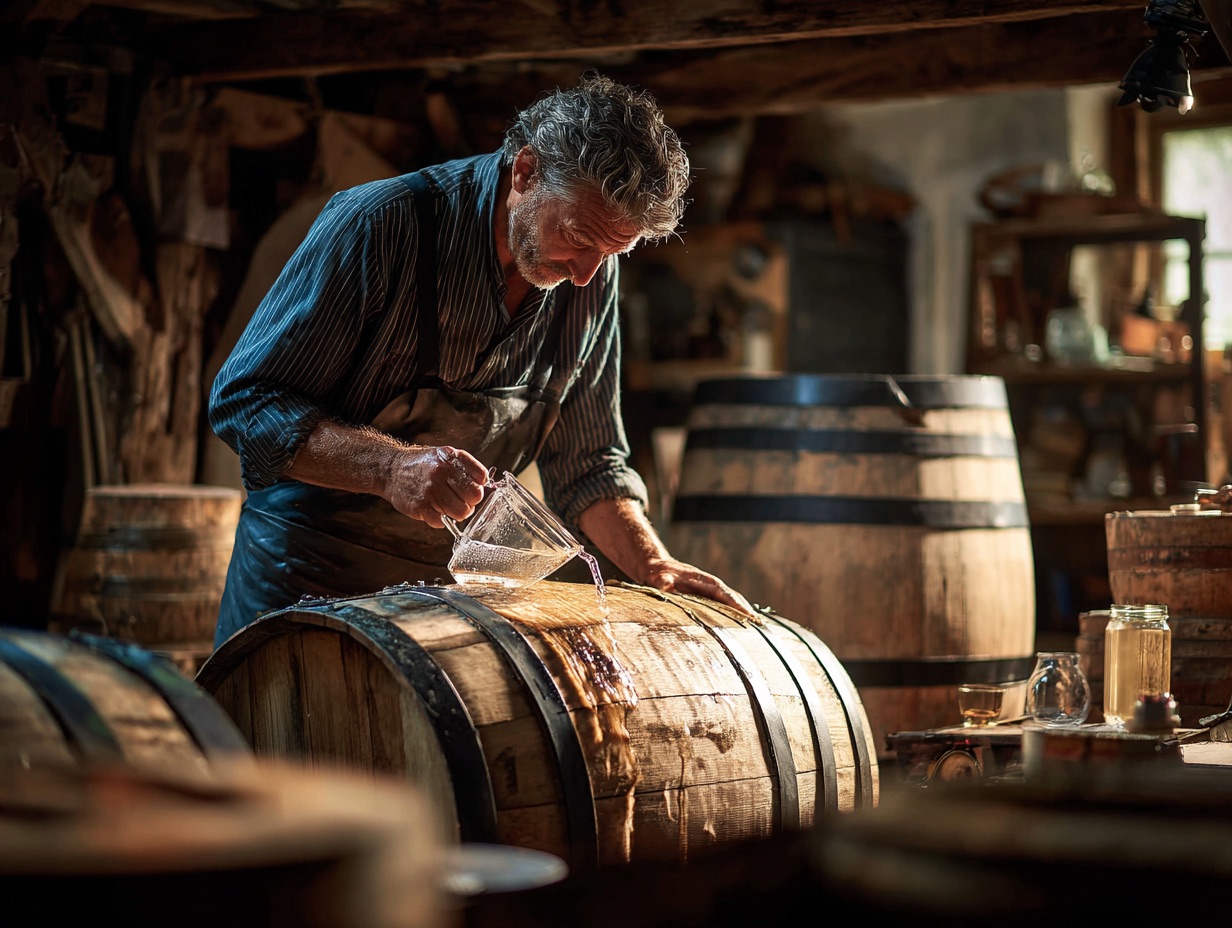Why barrel preparation matters more in the fall
As outdoor conditions shift, cellars experience temperature and humidity changes that affect wood elasticity, joint tightness, and evaporation. Entering winter with barrels that are properly hydrated and sealed reduces angel’s share, off-aromas, and spoilage risk. Industry guidance converges on cool cellars and moderate humidity: aim near 55 °F / 13 °C and ~65–75% RH to balance evaporation control with mold risk. Keep daily temperature swings low.
Step-by-Step Professional Protocol
1) Inspection & initial rinse
- Visually inspect heads, staves, croze, and hoop integrity. Tighten loose hoops.
- Rinse the interior with clean, chlorine-free water until the runoff is clear to remove dust and toast particles.
2) Hydration & swelling (make the wood seal)
Choose one of the following swelling methods. Use clean water only; avoid long soaks that go stagnant.
- Cold-water fill & rotate: Fill ¼ to ½, roll for 10–15 minutes to wet all surfaces, then top up as needed. Rest upright on each head to encourage swelling. Drain and re-check after a few hours.
- Hot-water method: Add very hot water (up to ~160–180 °F / 71–82 °C) for a shorter, more effective swell; rotate to contact all internal surfaces. Drain fully before leak-testing.
3) Leak test
- Fill partially and check joints, heads, and stave interfaces. Minor weeping often stops as the wood finishes swelling.
- If persistent weeping occurs, repeat a short hot-water swell or re-hydrate targeted zones by resting the barrel on each head in turn.
4) Sanitation options (choose one based on product & SOP)
After swelling and before filling, sanitize to reduce surface microbes lodged in the stave pores. Pick the method that fits your program:
- Steam: Efficient and chemical-free. A typical approach is several minutes of saturated steam to reach microbial-lethal temperatures within the stave. Let cool, then drain condensate.
- Hot-water sanitation: Fill with 50–70 °C (122–158 °F) water and soak; this helps soften tartrates and reduces surface microbes. Drain thoroughly.
- SO₂ + citric holding solution (wine programs): For empty storage between fills, a metabisulfite + citric solution can help maintain sterility and stave off swelling. Rinse thoroughly before filling to avoid residues, especially for spirits.
- Ozone (specialized systems): Can be effective but is sensitive to diffusion limits in wood; ensure validated contact times and safety protocols.
5) Seasoning (aroma stabilization before first fill)
Allow a short, controlled rest to equilibrate moisture and volatiles, particularly for new barrels:
- Rest in a clean, ventilated space at ~65–75% RH and cool cellar temperatures.
- Keep bung out briefly after hot processes to vent steam/condensate, then install a breathable bung until fill day.
- Target a short window (days to a couple of weeks) so the barrel doesn’t dry. Avoid perfumes or off-odors in the room.
Quick readiness check
- Exterior dry; joints not seeping.
- Interior neutral-clean (no chlorine, no musty notes, no sulfur residue if not intended).
- Bung seals well; hoops snug.
Common mistakes to avoid
- Over-soaking with stagnant water. Refresh or drain; standing water promotes microbes.
- Skipping sanitation after swelling. Hydration ≠ sanitation; use steam or hot-water protocols (or validated chemical programs for wine storage).
- Dry winter storage. Low RH shrinks joints and causes leaks on the next fill.
- Big daily temp swings. They drive in-and-out gas exchange, accelerating losses and stress on joints.
Pro tips for stable fall & winter storage
- Hold near 55 °F / 13 °C and ~65–75% RH. Use gentle ventilation; avoid heaters or direct sun.
- Log last hydration date on the barrel (a grease pencil on the head works well).
- Between fills (wine): consider an SO₂ + citric holding solution if empty for longer periods; rinse thoroughly before reuse.
- Between fills (spirits): prefer steam or hot water; avoid sulfur carryover that can interact with high-proof distillate.
Why choose BarrelsWood
- Handcrafted Canadian oak barrels built with traditional joinery—no wax, paint, or glue in the liquid path.
- Each barrel is leak-checked and ready to swell rapidly with a short hydration cycle.
- Consistent, clean toast profiles designed for predictable extraction across first fills.
- North American supply for reliable lead times and responsive support.
FAQ Barrel Seasoning & Preparation
How long should I hydrate a new barrel?
With hot-water swelling, many new barrels become tight the same day. Cold-water methods typically require several hours on each head. Avoid leaving plain water standing more than a day or two; refresh if needed.
What sanitation method is best?
For a chemical-free approach, steam is efficient and fast. Hot-water soaks also work well. Wine programs commonly use SO₂ + citric holding solutions during empty storage; rinse well before refilling. Spirit programs usually avoid sulfur residues.
What are ideal cellar targets for fall/winter?
Approximately 55 °F / 13 °C and ~65–75% RH, with minimal daily swings.
How do I stop minor weeping at a seam?
Repeat a short hot-water swell and rest the barrel on the weeping head so that the area remains wet as the wood expands. Persistent leaks after proper swelling warrant hoop adjustment or cooperage service.

